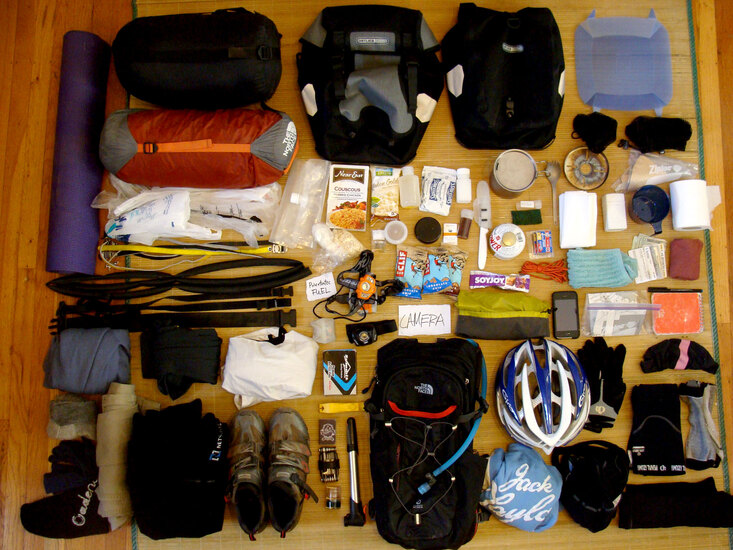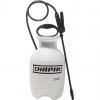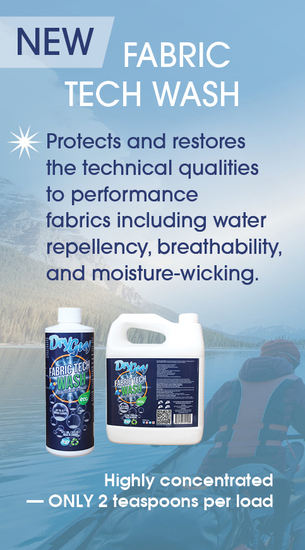Planning a trip to the backcountry?
Before you head out to that campsite, consider making a camping checklist that you can use every time you’re getting ready for your next adventure. A little advanced planning will make your camping trip safer, more comfortable and more enjoyable. You can use the list over and over, so you’ll never forget to take important camping supplies. But how much and exactly what should you include? That’s a tough question. Part of the answer lies in figuring out what kind of camper you are, what your comfort level is and what style of camp you want to have. This is the first step to making a comprehensive camping checklist. There are several categories of gear you’ll need: basics, fire building, dining and cooking, lighting and miscellaneous extras you might not think of. We’ll cover all these categories in this article.
Are you a minimalist who can do without creature comforts and a lot of extra (and to you, extraneous) equipment? The minimalist is willing to take the wilderness as it comes, adapting as needed to weather conditions and terrain. Minimalists disdain all the extras favored by other many campers, preferring to sleep on the ground, rather than on camping cots. The minimalist’s camp is sparse, with a fire rather than a stove and small candles rather than lanterns. These campers try their best to experience the outdoors on its own terms. Their camping checklist is short and sparse by choice.
 Gear-oriented campers are the people who like to be comfortable and prepared for anything. Their campsites are fully “furnished” with tables, chairs, stoves, cots and other conveniences. While enjoying and respecting the outdoors, gear-oriented campers also prefer the little amenities that make a backcountry trip safe and secure – a home away from home. Their camping checklist will be much more extensive than the minimalist’s. In this article, we’ll focus on the gear-oriented camping list. It’s always easier to remove items from a list than it is to realize you’ve forgotten some crucial piece of camping equipment on a cold rainy night.
Gear-oriented campers are the people who like to be comfortable and prepared for anything. Their campsites are fully “furnished” with tables, chairs, stoves, cots and other conveniences. While enjoying and respecting the outdoors, gear-oriented campers also prefer the little amenities that make a backcountry trip safe and secure – a home away from home. Their camping checklist will be much more extensive than the minimalist’s. In this article, we’ll focus on the gear-oriented camping list. It’s always easier to remove items from a list than it is to realize you’ve forgotten some crucial piece of camping equipment on a cold rainy night.It goes without saying that you’ll need some basic items: a tent (preferably with a rain fly and at least one window), a good-quality sleeping bag, camping stove, camping food and water. Here’s a list of some other gear that can make your campsite more accommodating:
• Plastic sheeting for tent floor
• Air mattress or pad for under sleeping bag
• Large plastic boxes or buckets for food and equipment storage
• Emergency blanket; also called space blanket
• Tent seam sealer
• Folding tables
• Folding chairs
• Outdoor furniture – lightweight aluminum lawn chairs are a good choice
• Stools
• Pillows
• Binoculars
• First aid kit with blister treatment products
• Tarp(s) with grommets – can be rigged for shade or used to keep firewood dry
• Rope and twine or string
• Cots
• Small shovel
• Sunscreen
• Portable toilet
• Moist towelette or baby wipes
• Personal care items: soap, shampoo, toothpaste, etc.
• Insect repellent
• Tool (such as a hammer or axe) to pound in tent stakes
• Backpack, daypack, or fanny pack
• Towels and washcloths
• Air mattress or pad for under sleeping bag
• Large plastic boxes or buckets for food and equipment storage
• Emergency blanket; also called space blanket
• Tent seam sealer
• Folding tables
• Folding chairs
• Outdoor furniture – lightweight aluminum lawn chairs are a good choice
• Stools
• Pillows
• Binoculars
• First aid kit with blister treatment products
• Tarp(s) with grommets – can be rigged for shade or used to keep firewood dry
• Rope and twine or string
• Cots
• Small shovel
• Sunscreen
• Portable toilet
• Moist towelette or baby wipes
• Personal care items: soap, shampoo, toothpaste, etc.
• Insect repellent
• Tool (such as a hammer or axe) to pound in tent stakes
• Backpack, daypack, or fanny pack
• Towels and washcloths
Sounds easy doesn’t it? Gather some wood and build a fire. If you’ve ever arrived at your campsite on a dreary, rain-soaked day, you know how hard it can be to get a fire going. Even though the outside of the wood may be wet, the inside of larger pieces is probably dry. So bring a small axe and be prepared to split some logs. Also, store your matches in a waterproof container, or better, carry a butane lighter. Dry kindling is harder to find than dry wood.
While the minimalist is content to rehydrate a pouch of dried field rations, the gear-oriented camper enjoys hearty, camp-cooked meals. There is a variety of easy-to-prepare camping foods available, but many people like cooking from scratch in the outdoors. So, a more elaborate camping stove is required – something with more than one burner and adjustable flame. Or bring some iron bars to rig a pot hanger right over the fire for slow-simmering that 3-alarm chili. You’ll also need a cooler and ice or ice packs for your fresh food. Other equipment for the cooking portion of your camping checklist includes:
• Can opener
• Bottle opener
• Cutlery for food preparation and serving – sharp knife, large spoon, large fork, ladle
• Cookware – cast iron works well
• Messkits or other eating vessels and implements – forks and spoons
• Extra camping stove fuel
• Camping recipes
• Small charcoal or propane grill – a cast-iron hibachi is small and efficient
• Appropriate fuel for grill
• Dishrack and dishwashing detergent
• Pot lifter or pot holders
• Coffee maker
• Cutting board
• Colander
• Tongs
• Thermos
• Tablecloth
• Storage containers
• Plastic cutlery, paper plates, plastic or paper cups
• Paper towels
• Napkins
• Trash bags
• Aluminum foil
• Bottle opener
• Cutlery for food preparation and serving – sharp knife, large spoon, large fork, ladle
• Cookware – cast iron works well
• Messkits or other eating vessels and implements – forks and spoons
• Extra camping stove fuel
• Camping recipes
• Small charcoal or propane grill – a cast-iron hibachi is small and efficient
• Appropriate fuel for grill
• Dishrack and dishwashing detergent
• Pot lifter or pot holders
• Coffee maker
• Cutting board
• Colander
• Tongs
• Thermos
• Tablecloth
• Storage containers
• Plastic cutlery, paper plates, plastic or paper cups
• Paper towels
• Napkins
• Trash bags
• Aluminum foil
Light up the night.
Be sure to bring several flashlights and plenty of extra batteries. A lantern or two will cast some welcome light in camp. Your lamps can run on a battery, liquid fuel or propane. Be sure to have some extra mantles on hand if any of your lights use them. Lighting is important – don’t underestimate its value, especially if there are children in your party. Children should have their own water-resistant flashlights. What child doesn’t remember playing camping games in their tent late at night by the glow of a lantern or flashlight? Kids also enjoy glow sticks.
More essential equipment.
If you’re planning on hiking, you’ll need a backpack, compass, travel guide, map, suitable shoes, extra socks and a hat. Another indispensable piece of camping gear is the multifunction pocket knife. These handy little tools often include:
• Screwdriver – flathead and Phillips
• Bottle opener
• Can opener
• Corkscrew
• Scissors
• Tweezers
• Awl
• One or two super-sharp blades.
• Bottle opener
• Can opener
• Corkscrew
• Scissors
• Tweezers
• Awl
• One or two super-sharp blades.
One model pocket knife even comes with a reusable plastic toothpick, something you might never think of including on your camping checklist. All backpacks should contain such a knife. If you’re going to swimming or bathing in a lake or stream, which often have rock bottoms, some type of waterproof footgear, like the popular “jellies,” is essential. Other miscellaneous items to bring:
• Duct tape
• Safety pins
• Sewing kit
• Small battery-operated radio
• Camera or camcorder with extra film and batteries
• Reading material
• Playing cards, checkers, chess set, etc.
• Paper and pen
• Battery-operated clock
• Basic tools: pliers, screwdriver, hammer
• Safety pins
• Sewing kit
• Small battery-operated radio
• Camera or camcorder with extra film and batteries
• Reading material
• Playing cards, checkers, chess set, etc.
• Paper and pen
• Battery-operated clock
• Basic tools: pliers, screwdriver, hammer
Camping is great recreation.
From campgrounds that are more like resorts to the challenge of true wilderness camping, you’re bound to find some “level” of camping that’s just right for you. Bringing the right outdoor equipment is the best way to ensure your trip will be a memorable one.
A camping checklist will streamline your packing and preparation. Although experience is the best teacher, a good, comprehensive checklist can help make the difference between an enjoyable camping trip and a disastrous one. Your checklist will be dynamic – you’ll add items and remove items with every trip. Just be sure to keep it up to date. Whether you’re a minimalist or a gear-oriented camper, camping provides many challenges. A thoughtfully-devised checklist will enable you to sleep dry and warm, build a welcoming fire, enjoy a great camp-cooked dinner, light your camp effectively and handle any miscellaneous small emergencies that might occur.
A camping checklist will streamline your packing and preparation. Although experience is the best teacher, a good, comprehensive checklist can help make the difference between an enjoyable camping trip and a disastrous one. Your checklist will be dynamic – you’ll add items and remove items with every trip. Just be sure to keep it up to date. Whether you’re a minimalist or a gear-oriented camper, camping provides many challenges. A thoughtfully-devised checklist will enable you to sleep dry and warm, build a welcoming fire, enjoy a great camp-cooked dinner, light your camp effectively and handle any miscellaneous small emergencies that might occur.




















Comments